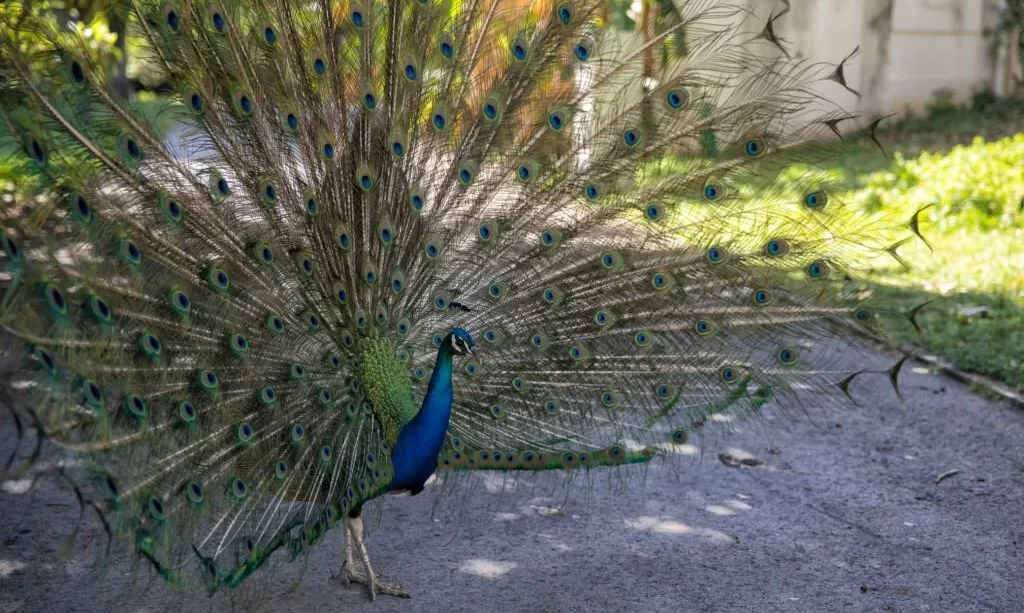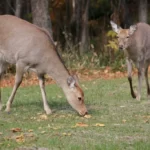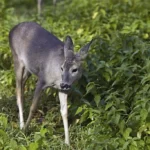Peacocks, with their resplendent plumage and regal demeanor, have captured the fascination of people worldwide. These magnificent birds bring a touch of elegance to any environment they grace. However, one common concern among peafowl owners is the risk of these birds flying away. In this guide, we will delve into the art of keeping peacocks from taking flight and offer practical solutions to ensure their safety and contentment. Responsible peafowl ownership goes hand in hand with creating a secure and nurturing environment for these avian treasures.
Peafowl Behavior
To address the challenge of peafowls flying away, it’s crucial to comprehend their innate behavior. Peafowls are known for their ability to fly and their penchant for roosting in trees. They might be tempted to take flight for various reasons, including the pursuit of food, seeking mates, or engaging in territorial disputes. Recognizing these instincts is the first step in devising effective strategies to prevent escape and encourage peafowls to stay within their designated area.
Section 2: Providing Adequate Enclosures A secure and suitable enclosure is paramount for keeping peacocks safely contained. The type of enclosure you choose significantly influences the ability to prevent peafowls from escaping. Solid and well-constructed fencing is essential to thwart their flight attempts. When designing an enclosure, factors such as size, height, and materials used should be carefully considered. By creating a well-crafted and secure environment, you set the stage for keeping your peafowls where they belong, ensuring their safety and your peace of mind.
Clipping Peacock Wings
One effective method to prevent peacocks from flying away is wing clipping. This process is safe and humane when done correctly. Here’s how to clip a peacock’s wings:
- Gather Supplies: You’ll need a pair of sharp, clean scissors or poultry shears. It’s crucial to ensure your tools are sterile to prevent infection.
- Identify the Primary Feathers: Focus on the primary flight feathers, which are the longest feathers on the wing. These are the feathers responsible for lifting the bird into flight.
- Restraining the Peacock: Gently catch and restrain the peacock. To ensure the bird’s safety and minimize stress, it’s advisable to have someone experienced assist you, or you can wrap the peacock in a towel to keep it calm.
- Clipping the Feathers: One wing should be clipped at a time. Locate the primary feathers on one wing and use your scissors to trim them to the desired length. It’s important not to cut too close to the wing’s base to avoid injuring the bird. Typically, leaving 4-6 inches of the primary feathers is sufficient to prevent flight.
- Repeat on the Other Wing: After completing one wing, repeat the process on the other to ensure balance. Ensure a clean, even cut to maintain the bird’s stability.
- Regular Maintenance: Wing clipping is not a permanent solution, as the feathers will grow back over time. It’s essential to monitor and re-clip the wings as necessary, typically after each molting season.
Feeding and Watering Techniques
Proper nutrition and hydration are key elements in keeping peacocks content and less likely to venture away in search of sustenance. Here are essential techniques:
- Balanced Diet: Provide peafowls with a well-balanced diet, including high-quality poultry feed formulated for game birds. This diet should contain the necessary nutrients and minerals they require. You can supplement their diet with fruits, vegetables, and grains.
- Feeding Schedule: Establish a consistent feeding schedule to ensure peacocks know when and where to find their meals. Regular feeding reduces the temptation to forage for food elsewhere.
- Access to Water: Access to clean water is vital for peafowls. They require water for drinking and for bathing, which is essential to maintain their plumage. Ensure that water is readily available and changed regularly to keep it fresh.
By correctly clipping peacock wings and providing a well-balanced diet with access to clean water, you can help ensure that your peafowls remain content and less inclined to wander in search of resources. These practices are part of a holistic approach to peafowl care that aims to create a secure and nurturing environment for these magnificent birds.
Social Interaction and Entertainment
Peafowls thrive when they have opportunities for social interaction and mental stimulation. Here’s how to ensure they are content and engaged:
- Companionship: Peafowls are social birds and enjoy the company of their own kind. Consider keeping multiple peafowls together to prevent loneliness and boredom.
- Interactive Toys: Provide your peafowls with simple but stimulating toys and objects in their enclosure. Items like hanging mirrors or colorful objects can engage their curiosity.
- Free Range Time: Allowing your peafowls some supervised free-range time in a safe and enclosed area can be enriching. It gives them a chance to explore, forage, and exercise.
- Shelter: Offer adequate shelter to protect peafowls from extreme weather conditions, including both hot summers and cold winters.
Monitoring Health and Well-Being
Regular health monitoring and well-being checks are vital for the long-term care of peafowls:
- Health Checks: Conduct routine health checks to look for any signs of illness, injury, or abnormal behavior. Early intervention can prevent health issues from escalating.
- Shelter and Protection: Ensure that your peafowls have appropriate shelter from the elements and potential predators. Make necessary adjustments based on the weather conditions.
- Stress Management: Be aware of stressors that may affect your peafowls, such as excessive noise, disruptions, or new additions to their environment. Minimize stressors to promote their well-being.
Conclusion
In conclusion, keeping peacocks from flying away requires a combination of strategies that focus on their behavior, habitat, and overall well-being. Understanding their natural instincts, providing secure enclosures, and performing routine wing clipping when necessary are essential elements. Moreover, offering a balanced diet, social interaction, and mental stimulation contributes to their contentment and reduces the temptation to explore beyond their home.
As responsible peafowl owners, it’s our duty to ensure the safety and happiness of these magnificent birds. By implementing the techniques outlined in this guide, you can establish a secure and nurturing environment that not only prevents peacocks from flying away but also allows them to flourish in their captivating elegance.




